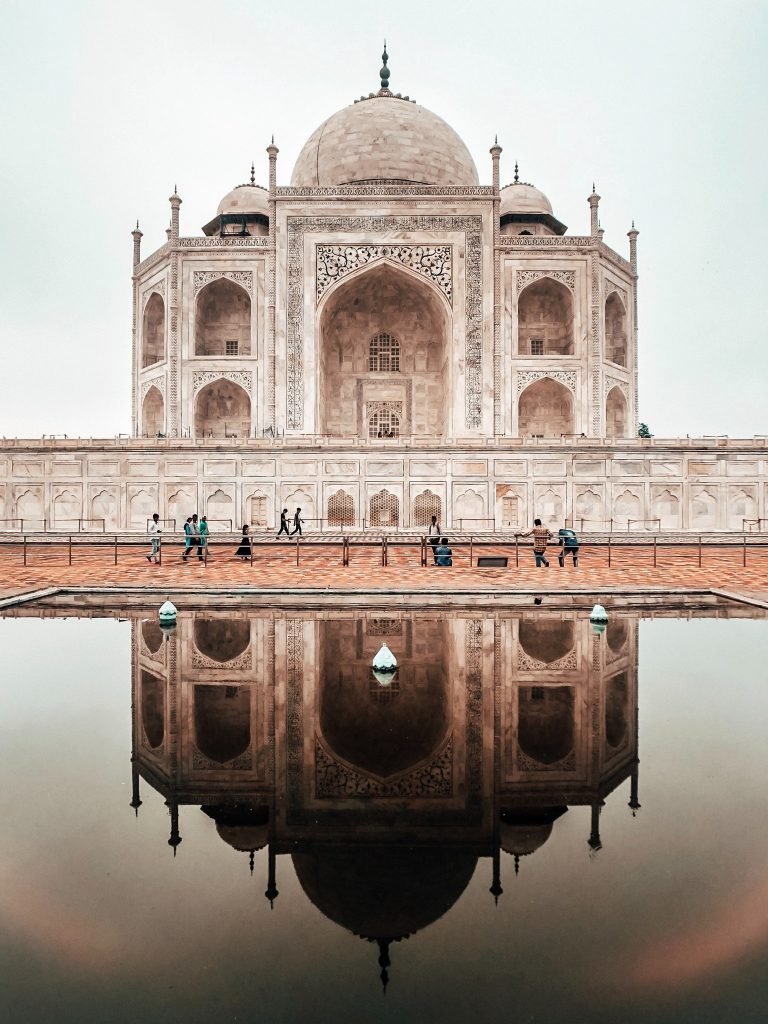The Charbagh plan that was superbly embraced by the organizers of Taj Mahal who expected to give it a prominent quality, did this by successfully intertwining the water contraptions, water which was brought from the stream Yamuna, into the system so the nursery looks overflowing with life in any event, following three centuries.
Also you like to read How many days should you stay in Agra to see all the sights?
“Taj Mahal is surrounded by a four by four garden, popularly known as Charbagh.”
The rich green grass, the bold blossom eminence, the consistently creating trees, and the most stunning components of all of them: a brought lotus lake up in the point of convergence of the nursery that gives a pure impression of the Taj Mahal is an attribute of plan wizardry being gotten under way impeccably by means of mindful coordination and setting up of water devices at the Taj Mahal in a very systematical way. The result was the for the most part immaculate point of view on the Taj Mahal is moreover improved by a total of 24 wellsprings on every one of the four sides of this lotus lake.

Purs (a rope and container pulled by bullocks) were utilized for drawing water from the waterway and from that point the water was moved to a gigantic stockpiling tank. Again thirteen purs were utilized to siphon the water from the tank. From this tank, the water was taken into another gigantic stockpiling tank through an overhead water channel.
“the entire nursery is taken care of with water through interconnected trenches”
From this tank, water was again siphoned through fourteen purs lastly filled into three stock tanks through another channel. The final remaining one of the stock tanks had pipe mouths in its eastern divider. These lines entered the Taj Mahal walled-in area from underground, with one of them moving towards the mosque to supply the wellsprings in the tanks on the red sandstone plinth underneath the marble structure. Some portion of the current water supply actually utilizes the tanks of the old reservoir conduit, which are filled from wells by electric siphons
For the wellsprings in the north-south waterway and the lotus lake and its trench, copper pipes were utilized. To guarantee uniform and undiminished water tension in the wellsprings, a copper pot was given under every wellspring pipe. The water supply started things out into the pot just and from that point, rose at the same time in the wellsprings, which implies that the wellsprings were constrained by the strain in the pots rather than the tension in the lines.

The primary inventory of the water in these pots came through ceramic lines, some of which were supplanted with cast iron back in 1903. Furthermore concerning irrigational purposes, aside from the power source at the two outrageous closures, the entire nursery is taken care of with water through interconnected trenches.
It is an amazing fact that though placed hundreds of years ago, these pipelines are still intact and usable. Hence visit Taj Mahal just not to witness its sublime beauty but also to get a view of flawless ancient engineering.
With the exception of the incline, the majority of the water gadgets at Taj Mahal have gone the distance is as yet present there. Also, it’s the presence of these very water gadgets that the actual magnificence of the Taj has been taken to an ethereal level.
You also like to Read:- How to reach Taj Mahal
Does the Taj Mahal have a fountain?
The Taj Mahal has a fountain located in the center of the charbagh, a formal Mughal garden that is situated in front of the main tomb. The fountain is a beautiful feature of the Taj Mahal complex and is made of white marble.
The fountain is surrounded by four reflecting pools, which create a stunning visual effect. The jets of water are arranged in a way that forms a series of patterns, including a lotus and a star. The water for the fountain is sourced from the nearby Yamuna River and is pumped into the fountain through a system of underground channels and a hydraulic system.
The fountain is not operational throughout the day, and it is generally turned on for a few hours in the morning and evening. During the winter months, the fountain may not be turned on at all due to the colder temperatures.
Overall, the Taj Mahal fountain is a beautiful and iconic feature of this world-famous monument, and it adds to the overall grandeur and beauty of the complex.
What does the reflecting pool do in the Taj Mahal?
The reflecting pool in the Taj Mahal serves both an aesthetic and practical purpose. The pool is located in front of the main tomb and is surrounded by four walkways that divide the charbagh, or Mughal garden, into 16 equal parts.
From an aesthetic perspective, the reflecting pool serves as a beautiful feature of the Taj Mahal complex. It creates a mirror-like reflection of the main tomb and its surrounding structures, which adds to the overall beauty and symmetry of the monument. The pool also reflects the changing colors of the sky during sunrise, sunset, and different times of the day, creating a stunning visual effect.
From a practical perspective, the reflecting pool helps to cool the surrounding area and provides a source of water for the nearby flora. The pool also serves as a catchment for rainwater, which helps to prevent flooding in the area during the monsoon season.
Overall, the reflecting pool in the Taj Mahal serves both a functional and aesthetic purpose, and it is an integral part of the overall design and beauty of this world-famous monument.




























